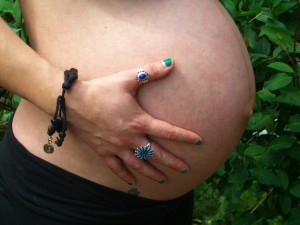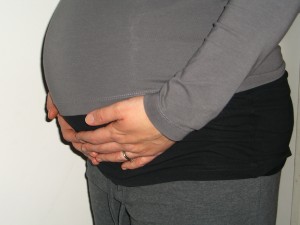
Research
Reduction of anxiety using hypnosis
Mothers who used hypnosis for anxiety and stress management had foetuses who moved in a much more active manner than a control group (Zimmer, Peretz, Eyal and Fuchs, 1988)
Hypnosis effects on turning foetuses from breech position
100 pregnant women whose foetuses were in breech position at 37 – 40 weeks’ gestation and a matched control group. 81% of breech babies were successful conversions to a vertex position compared with 48% in the control group. The success was thought to be down to psychophysiological factors which may influence the breech position. (Mehl, 1994)
Reduction in length of labour using hypnosis
Jenkins and Pritchard (1993) found a reduction of 3 hours for prim gravid women (from 6.2 to 5.3 hours) for active labour (262 subjects and 600 controls). Pushing was statistically shorter for 1st time mothers (from 50 – 37 min). These women were more satisfied with labour and reported other benefits of hypnosis such as reduced anxiety and help with getting to sleep.
Abramson and Heron (1950) & Gallagher (2001) found a shorter 1st stage of labour for 100 women trained with hypnosis (by 3.23 hours) compared to a control group of 88 women.
45 Hypnosis for Childbirth clients (1st time mothers) had an average of 4.5 hours for the active labour, a significant reduction compared to the usual 9 hours. Harmon, Hynan and Tyre, 1990)
Medication use
Bobart and Brown Study (2002) using 72 mothers, 36 of whom had received hypnotic training, compared to a group of 36 who delivered on the same day without training:
| Control group | Hypnosis group | |
| Regional anaesthetic | 35 (97%) | 14 (38%) |
| Analgesia | 27 (75%) | 2 (5.5%) |
| No anaesthetic or premedication | 1 (2.7%) | 22 (61%) |
At birth Apgar scores are significantly higher.
In British studies of hypnosis and childbirth, 55% of 45 patients (1st & 2nd time mothers) required no medication for pain relief. In the other non-hypnosis groups, only 22% of 90 women required no medication.
A further two research studies reported on 1,000 consecutive births: 850 women used hypnotic analgesia resulting in 58% of no medication. Five other research studies reported an incidence of 60 – 79% non-medicated births (Harmon, Hynan and Tyre, 1990)
A meta-analysis compiling data from 14 studies that included more than 1,400 women showed that hypnosis reduces the need for drug pain relief in labour, lessens the need for medications that augment labour and increases the number of spontaneous vaginal births (Smith et al., 2006)
Harman, Hynan and Tyre (1990) reported more spontaneous deliveries, higher Apgar scores and reduced medication use in a study of 60 women.
“A woman’s ‘self-efficacy for labor’ or confidence in her ability to cope has a powerful relationship to decreased pain perception and decreased medication/analgesia during labour. Anxiety is commonly associated with increased pain during labour, and may modify labour pain through psychological and physiological mechanisms. “fear of pain may be one component of labor related anxiety, and has a huge correlation with pain levels reported during 1st stage labor.” (Lowe, 2002)
Rates of Intervention
38 out of 45 Hypnosis for Childbirth mums delivered spontaneously without the use of caesarean, forceps or venteuse. This rate of 84% is higher than the average rate of normal birth for the general population of 1st time mothers (Harmon, Hynan and Tyre, 1990).
Postpartum depression
McCarthy (1998) provided 5 x 30 min sessions to 600 women and found a virtual absence of postpartum depression, compared to the typical rates of 10 – 15%. Women with a history of postpartum depression did not develop this condition, even though an estimated 50% usually do. Harmon et al also reported lower depression scores in the hypnotically treated group.
Harman et al (1990) reported a reduced incidence of postnatal depression in women who had been taught hypnotic analgesia for childbirth.
Effects of suggestion during labour
Hao et al (1997) in China measured the effect of nursing suggestions to labouring women and recommends that the conversation of the nurses be “controlled carefully for the purpose of advancing the birth process.” This randomised control trial examined 60 1st time mothers with a matched control group of 60 1st time mothers and found a statistically significant reduction in the lengths of the 1st and 2nd stages of labour.
Promoting lactation
Hypnosis can be used to promote and to suppress lactation (August, 1961; Cheek & LeCron, 1968; Kroger, 1977).
Contact me now by phoning 01453-750382, or email me using the contact form.

